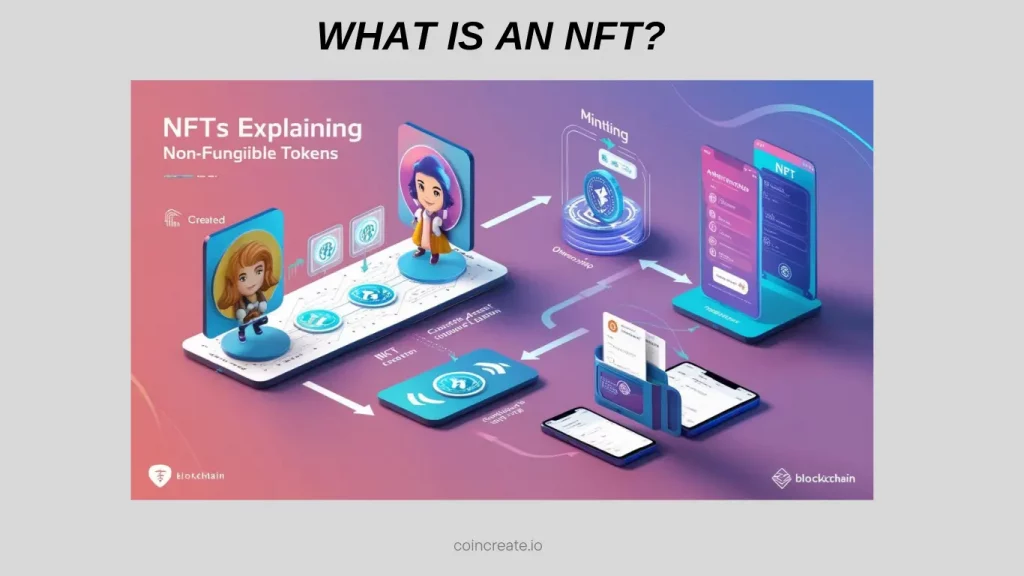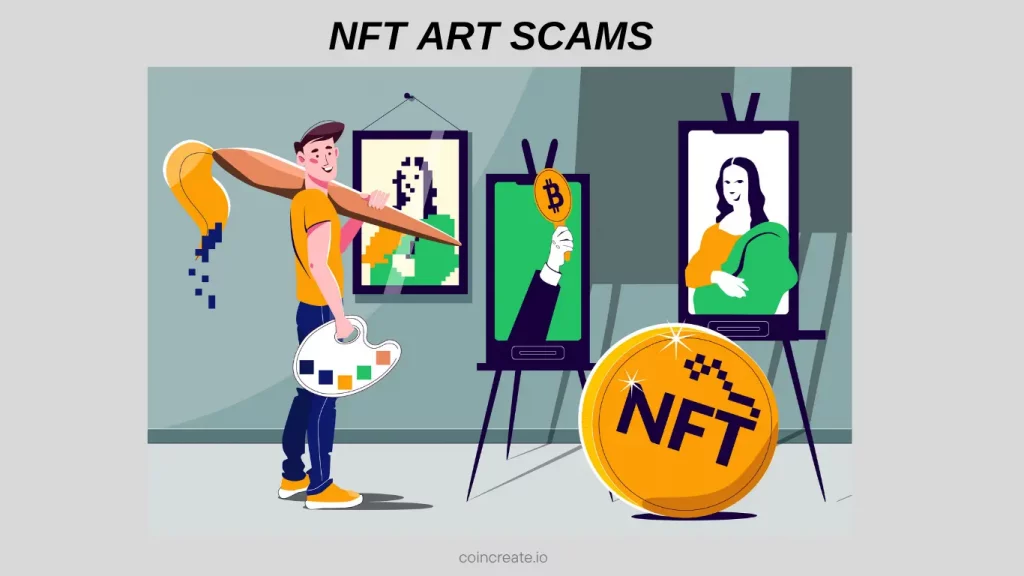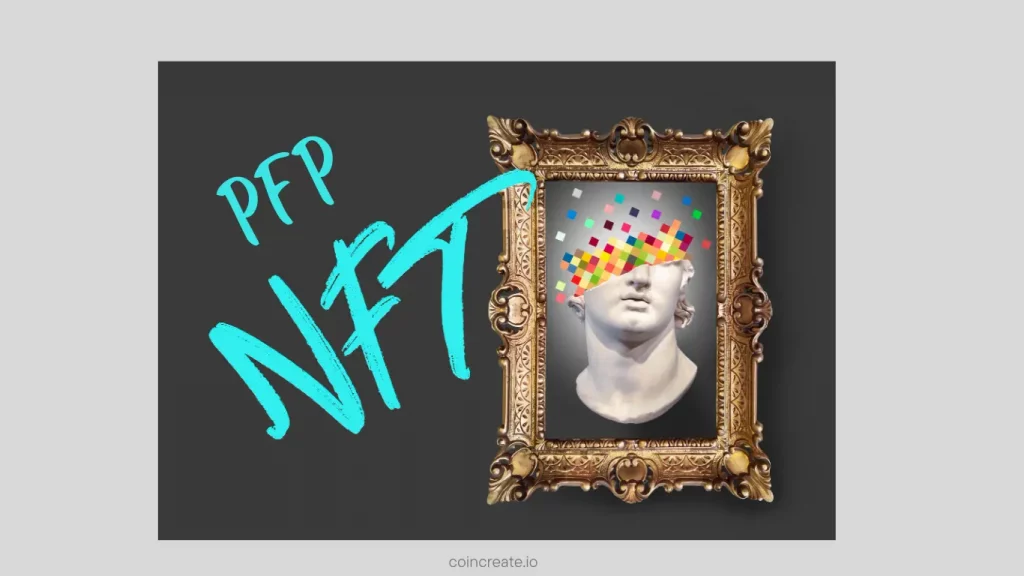What Are Nfts And How Do They Work
NFTs, or Non-Fungible Tokens, have undoubtedly shaken up the digital landscape. As someone deeply involved in this space, I’ve seen firsthand how these unique digital assets, stored securely on a blockchain, are revolutionizing ownership and authenticity. Unlike cryptocurrencies, which are fungible and interchangeable, NFTs are one-of-a-kind. Think of them as digital certificates representing ownership of anything from artwork and music to videos, collectibles, and even real estate.

At its core, an NFT is a digital certificate of authenticity irrevocably linked to a specific item. It’s like a digital fingerprint, containing metadata and unique identification codes that make it irreplaceable. This is achieved through a process known as “minting,” where the asset’s information is encrypted and permanently recorded on the blockchain. For creators, NFTs offer a groundbreaking way to tokenize their work, establishing immutable proof of ownership and facilitating secure buying, selling, and trading.
Difference Between NFTs and Cryptocurrencies
It’s easy to confuse NFTs with cryptocurrencies, but there are fundamental differences
Fungibility: Cryptocurrencies like Bitcoin are fungible; one Bitcoin is identical to another. NFTs are non-fungible, meaning each token possesses unique attributes and cannot be substituted.
Purpose: Cryptocurrencies primarily function as a medium of exchange or a store of value. In contrast, NFTs represent ownership of specific assets, be they digital or physical.
Divisibility: Cryptocurrencies can be divided into smaller units (e.g., 0.001 BTC), while NFTs typically exist as indivisible, whole tokens.
Why NFTs Are Unique
What truly sets NFTs apart is their reliance on blockchain technology. This ensures transparency, security, and, most importantly, immutability. Each NFT boasts a digital signature that meticulously verifies its authenticity and ownership history. What’s more, an NFT can only have one official owner at any given time, guaranteeing exclusivity and scarcity.
How Do NFTs Work?
NFTs operate through a powerful combination of blockchain technology, smart contracts, and tokenization. Let’s break it down
Blockchain Technology
Think of the blockchain as a decentralized, immutable ledger. It meticulously records transactions across a vast network of computers. For NFTs, this means
- Each token’s ownership and transaction history are permanently etched onto the blockchain.
- Cryptographic hashing guarantees that this data cannot be altered retroactively, providing unshakeable proof of authenticity.
- Ethereum has emerged as the leading blockchain for NFTs, thanks to its robust support for smart contracts and established token standards.
Smart Contracts
These self-executing programs are the engines that drive NFT creation, transfers, and the enforcement of pre-defined rules. I think of them as the automated agreements that make the NFT ecosystem function
- Minting: This converts digital files (artwork, music, and more) into NFTs by encoding metadata and ownership details within a smart contract.
- Royalties: Smart contracts can automatically distribute payments to creators on secondary sales (e.g., a 10% cut of the resale value), ensuring they benefit from their work’s continued success.
- Ownership Transfer: When an NFT changes hands, the smart contract automatically updates the blockchain ledger, eliminating the need for intermediaries.
Tokenization
This process transforms assets into unique, blockchain-based tokens. Here’s what makes it special for NFTs
- Uniqueness: Each NFT is assigned a distinct identifier, typically adhering to standards like ERC-721.
- Metadata: This crucial component contains all the essential details, like the asset’s name, its defining characteristics, and links to the digital files (whether stored on-chain or off-chain).
- Non-Fungibility: Unlike cryptocurrencies, NFTs are not interchangeable and cannot be subdivided (although fractional ownership platforms are emerging).
Ethereum and Token Standards
Ethereum’s token standards are the backbone of NFT functionality. Two key standards are
Comparison of NFT Token Standards
| Standard | Function | Use Case |
|---|---|---|
| ERC-721 | Creates unique, non-fungible tokens with static metadata (think CryptoPunks). | Digital art, collectibles |
| ERC-1155 | Supports both fungible (e.g., in-game currency) and non-fungible tokens within a single contract. | Gaming assets, bulk NFT transactions |
In practical terms, the groundbreaking $69 million sale of digital artist Beeple’s NFT relied on Ethereum’s ERC-721 standard to guarantee ownership. Meanwhile, gaming platforms such as Axie Infinity leverage ERC-1155 for efficient bulk item transfers. NFTs, therefore, seamlessly merge cryptographic security with programmable ownership, paving the way for innovative models of digital and physical asset management.
Where to Buy and Sell NFTs
The NFT landscape has exploded, providing creators and collectors with exciting new avenues to own and trade unique digital assets. Whether you’re an artist seeking to monetize your work or a collector on the hunt for rare digital treasures, understanding where and how to buy and sell NFTs is paramount. So, let’s explore the top NFT marketplaces and essential digital wallets to get you started.
NFT Marketplaces
NFT marketplaces serve as the central hubs where you can seamlessly browse, acquire, and sell NFTs. Each marketplace boasts distinct features and caters to specific asset types. Here are some of the most popular
As the largest and most established NFT marketplace, OpenSea supports multiple blockchains, including Ethereum, Polygon, and Solana. OpenSea offers both fixed-price listings and auctions, providing a versatile platform for buyers and sellers alike. Whether you’re captivated by digital art, collectibles, or even in-game items, OpenSea has something for everyone.
Primarily anchored on the Solana blockchain, Magic Eden has become a go-to destination for gaming and art NFTs. Its appeal lies in its low transaction fees and intuitive user interface, attracting both newcomers and experienced users.
Renowned for its community-driven ethos, Rarible supports Ethereum, Flow, and Tezos blockchains. What sets Rarible apart is that it empowers users to create, buy, and sell NFTs while participating in governance through the RARI token, granting them a voice in the platform’s evolution.
As an integral part of the Binance ecosystem, this platform offers a diverse array of NFTs, encompassing in-game assets, digital art, and collectibles. It leverages Binance’s robust infrastructure to deliver a seamless trading experience.
Digital Wallets
To actively engage with these marketplaces, you’ll need a digital wallet that’s compatible with the blockchain used by the NFT. Here are some popular choices
Trust Wallet
With its support for multiple blockchains, Trust Wallet enables you to manage and interact with a wide spectrum of crypto assets. It’s an ideal choice for those navigating diverse platforms.
MetaMask
Widely adopted as an Ethereum wallet, MetaMask seamlessly connects to platforms like OpenSea and Rarible, making it essential for anyone trading on Ethereum-based marketplaces.
Phantom Wallet
Tailored for Solana-based NFTs, Phantom Wallet works seamlessly with Magic Eden and provides a streamlined experience for users focused on the Solana ecosystem.
Ownership Proof
NFT marketplaces leverage blockchain technology to provide irrefutable proof of ownership. Each NFT is linked to a unique identifier stored on the blockchain, ensuring that ownership is both verifiable and secure. This decentralized model eliminates intermediaries, ensuring transparent and tamper-proof transactions.
How to Get Started
Ready to dive in? Follow these steps
- Set Up a Digital Wallet: Fund it with the necessary cryptocurrency. Ensure your wallet is compatible with the blockchain of the NFTs you’re interested in.
- Choose an NFT Marketplace: Register and connect your wallet to the platform. Each marketplace has its own interface and features, so explore to find what suits you best.
- Browse and Purchase NFTs: Use fixed-price listings or participate in auctions. Be sure to check transaction fees and ensure you have sufficient funds.
- Mint or Sell NFTs: Create new NFTs or list existing ones for sale, setting terms like price and royalties. This is where you can monetize your digital creations or resell acquired NFTs.
Examples of NFTs & Their Use Cases
NFTs have moved beyond digital art and are making a real impact across diverse industries. Let’s explore some real-world examples that highlight their versatility and potential
Digital Art and Collectibles
Beeple's "Everydays: The First 5000 Days": This digital collage sold for $69.4 million, demonstrating how NFTs can transform digital art into valuable assets. Bored Ape Yacht Club (BAYC): This collection of cartoon apes functions as both art collectibles and membership tokens for exclusive events.
Gaming Items
CryptoKitties, One of the first NFT-based games where players buy, breed, and sell virtual cats. Axie Infinity, A play-to-earn game where players collect, breed, and battle creatures called Axies, earning cryptocurrency rewards.
Virtual Real Estate
Decentraland, A virtual world where users purchase land parcels as NFTs to build experiences or monetize them. The Sandbox, A metaverse platform where virtual land sold for $4.3 million in one of the largest NFT real estate transactions.
What makes NFTs valuable across these industries?
- Royalties: Artists and creators earn a percentage from secondary sales through smart contracts.
- Interoperability: Assets like gaming items can be used across multiple platforms or games.
Are NFTs Still Valuable?
The NFT market has seen its share of ups and downs. While the explosive growth of 2021 has cooled, I believe NFTs remain relevant due to their evolving use cases and long-term potential.
- The Hype Cycle: NFTs gained massive popularity in 2021, but by 2023, the market saw a correction. This reflects a natural shift as speculative investments gave way to more sustainable growth.
- Projected Growth: Despite the downturn, the global NFT market is projected to grow significantly, suggesting that while the speculative bubble may have burst, NFTs are transitioning into more practical applications.
How NFTs Generate Income & The Royalties System
NFTs have introduced innovative ways for creators and investors to generate income. Let’s explore creator royalties, NFT staking, and flipping NFTs
Creator Royalties
NFT royalties allow creators to earn a percentage of every secondary sale of their NFT. This ensures a continuous stream of passive income. Smart contracts automate royalty payments, and this system incentivizes creators to produce high-quality content.
NFT Staking
Staking involves locking your NFT in a platform in exchange for rewards, often in cryptocurrency. This is common in gaming NFTs and metaverse platforms.
This involves buying NFTs at a lower price and selling them later for a profit. It requires market knowledge and timing but can be lucrative. However, be aware of the risks of market volatility and speculation.
The Future of NFTs
Looking ahead, I see NFTs becoming even more integrated into the metaverse, gaming, and Real-World Tokenization . NFTs will play a vital role in various industries, from virtual economies to ownership of physical assets.
Final Thoughts
In conclusion, the NFT space is dynamic and constantly evolving. I believe that while challenges remain, the long-term potential of NFTs is undeniable.
By understanding the technology, exploring diverse use cases, and approaching the market with a strategic mindset, we can unlock the true value of these unique digital assets. The future of NFTs is bright, and I'm excited to be a part of it.

